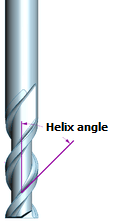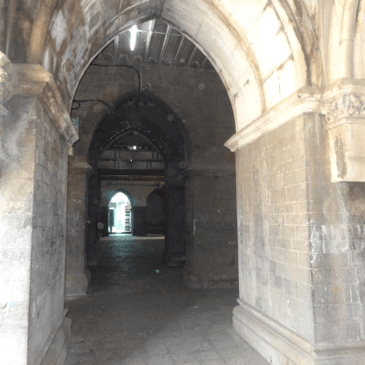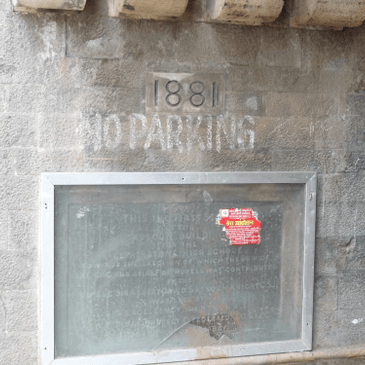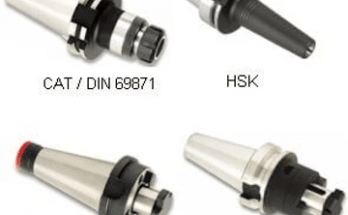CNC: End mill helix angles – how do they matter?


The cutting force on an end mill has a radial and an axial component. The radial component tends to bend the end mill and results in vibrations, while the axial component presses the end mill against the holder.
The higher the helix angle, the greater the proportion of axial force. On a 0 degree end mill (straight end mill), all the force is radial. Also, as each edge comes in contact with the work piece material there is a sudden shock load. This causes vibrations, poor surface finish on the part, and poor tool life.
On an end mill with a 30 degree helix angle, 25 % of the force is axial and 75 % radial. On a 45 deg. helix angle, the forces are divided equally, 50 % radial and 50 % axial. High helix cutters have an helix angle of 60 deg.
At a higher helix angle the radial forces are lower and cutting is smoother, vibrations lower. Surface finish and chip evacuation are better. The cutter is however weaker, cannot take heavy depths of cut and feed rates. It deflects more. Lower helix angle cutters are stronger, but the cutting is less smooth.
For heavy cutting where the finish and tolerance are not important, use a lower helix angle cutter. For lighter cutting where the finish and tolerance ARE important, use a higher helix angle cutter.
This post was prompted by a query in my last post from Mr. Shane Rozario. Thank you Mr. Rozario.
Text and pics. source: CADEM NCyclopedia multimedia CNC training software.
Etc.
Beauty in an unexpected place
I happened to visit the office of the Directorate of Technical Education in Mumbai some time ago, and found that it was housed in a beautiful old building built 134 years ago, in 1881.

There are a mix of circular and Gothic (the pointed ones) arches, and the walls have little details like the beautiful lions’ heads that you see in the picture below.




You’ll notice that there’s a ‘No parking’ sign right under the ‘1881’ sign. The guy in charge of maintaining the building is obviously no lover of old buildings. I can just imagine him thinking “I hate this old junk building. Wish we could break it down and build a nice modern one with a glass front”. The ‘1881’ sign too looks relatively new, made in cement instead of being carved into the stone.


